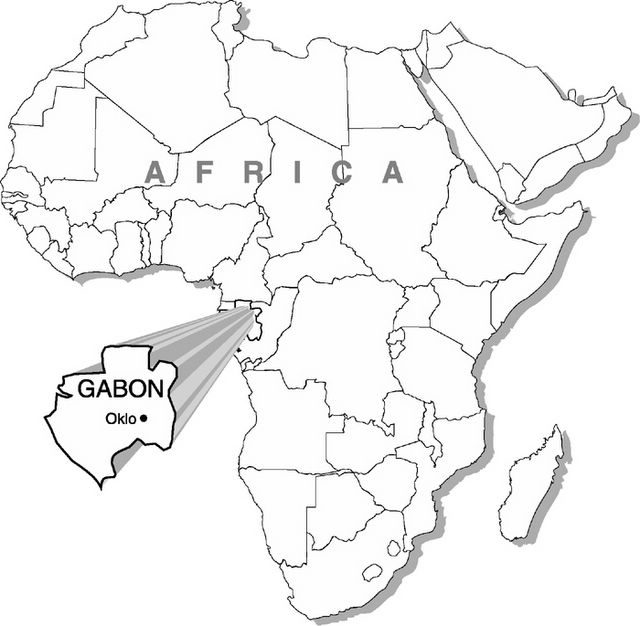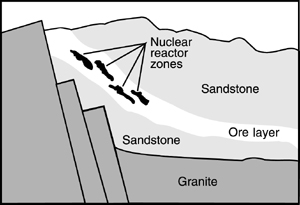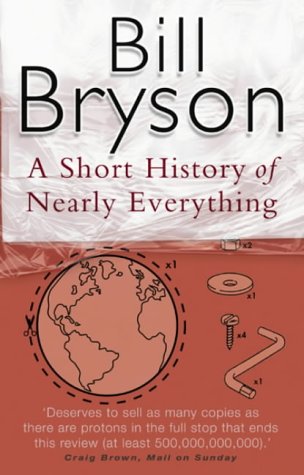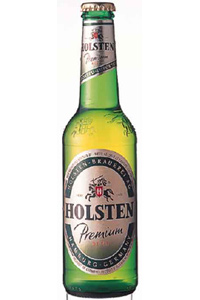Ok. I'm what some might call a skeptical conspiracist. Now, before I hear the howls from the bleachers decrying me as just another "Fox Mulder Wannabee", I am and have always been someone who adheres to Occums Razer, that is to say, the simplest, most logical answer, all things being equal is usually the right one. I am also open-minded. These are not mutually exclusive qualities. I attach (in blue) below an edited transcript of an email a good friend sent me:
Orgone... Phrase coined by one Wilhelm Reich in the 30s. He believed orgone to be an esoteric 'life force' omni-present and operating diametrically opposed to the EM field. A bit like the luminiforous ether of old. He claimed that orgone was the force on which all life forms fed and accumulated 'life' energy from the environment around them. Orgone has no mass and no electrical charge and can freely pass right through any material...Well, so far nothing too out there. In quantum physics one comes across many sub-atomic particles (quarks, photons, gluons) which a the building blocks of neutrons, protons and electrons and are considered to have 'no mass'. Furthermore, one only has to look as far as anti-matter (positrons etc) to find sub-atomic particles that pass through solid matter as a rule. Hmmm I said, keep reading...
Organic materials attract orgone energy whereas metallic (or non-organic) instead of repelling the orgone, would tend to reject it out of the other side. He then built an 'orgone accumulator'; a device capable of attracting orgone from the environment around it and 'amplifying' (focusing) it on a central area, a box with a seat in it. He had documented proof of over 30 cancer patients having been completely healed through orgone'therapy'. The FDA stepped in, and on trumpted-up charges threw him in jail. They apparently 'destroyed' over 30 tons of equipment and documentation. He died in prison a year later (1957) from 'natural' causes...So here then, it seems, is the discovery of a type of 'bio-electricity' that can be harnessed within organic tissues or cells. Considering that the myelin around our own nerve bundles encapsulate our own nervous impulses, albeit that they're of a purely chemical nature, here too I find nothing to get too excited about. What then was the fuss?
My own investigation into Wilhelm Reich saw some interesting results surface...
 "Reich was one of Freud's inner circle -- some say he was being groomed to take over leadership of the International Psychoanalytic Association (IPA) -- but he was ultimately centrifuged out of that organization for his social reform and anti-Nazi work. Historians have since documented the general capitulation of German psychoanalysis to the Nazis, but not so Wilhelm Reich, an Austrian-Ukrainian of Jewish background. Freud's early work strongly suggested emotions and sexuality were expressions of a tangible energetic "something", but it was Reich who provided the clearest evidence that the Freudian libido was a real energy, discharged during emotional expression and sexual orgasm. Parental or social punishments against the youthful expression of emotion, or of sexual love, led to internalized repression -- but this was accomplished only by literally tightening one's muscles, binding the energy down within the body and creating a powerful conflict of internal bioenergetic tension...Reich's later microscopic experiments with amoeba would produce other breakthroughs in the biological sciences, in the discovery of the specific process of bionous decay of tissues, which lay at the basis of cancer cell formation. Reich's findings on cancer are directly observable, and not just some speculative theory -- his observations on pre-cancerous cellular processes significantly predated those of George Papanicolaou (of "Pap-test" fame), and Reich believed his scientific priority had in fact been stolen. Unlike conventional medicine, Reich's discovery also revealed the role of emotional-sexual energy in the psychosomatic process. What at first appeared to be only "bioelectricity" was later clarified by Reich as a much more powerful bioenergetic force -- a form of life-energy at work within living organisms, expressing itself as emotion and sexuality, but also directly observable in the microscope as a bluish-glowing field around living blood cells and other substances. This bluish-glowing energy, which he eventually called orgone energy (to preserve its relationship with living processes), was later observed as a blue-glowing aura-like phenomenon around organisms, trees and even mountain ranges. The blue orgone also exists in a free form within the atmosphere -- Reich wrote about an "envelope" of blue-glowing energy surrounding the Earth long before the first satellite photos confirmed it...During the course of Reich's investigations, he developed a special metal-lined enclosure which attracted a high charge of orgone energy inside itself, directly from the atmosphere: the orgone energy accumulator . The orgone accumulator was proven to charge seeds and increase garden plant growth, speed the healing of burns and cuts, and there are a number of physical experiments which demonstrate anomalous phenomena inside the accumulator. Reich observed that certain kinds of low-energy illness, such as cancer, would symptomatically yield to careful application of the orgone accumulator. After he moved to the USA, he treated people experimentally with his combined emotional/orgone-energetic approach. Within a few years, however, he was attacked by US Food and Drug Administration, which was at that time (1955) in an all-out "war" against natural healing methods (the repression of natural healing methods has always been a major agenda of the FDA). The FDA obtained a court injunction which ordered the banning and burning of Reich's books -- any book containing the forbidden word "orgone" was ordered destroyed, even his classics on human sexuality which only mentioned orgone energy in the preface! The FDA factually burned Reich's books and journals on several occasions (most recently in 1962), while Reich was given a 2-year jail sentence for a misdemeanor technicality, dying in prison in 1957. The FDA's attack against Reich constituted a fraud upon the courts and the American people, and the Reich legal case continues to overshadow the better-known Scopes Monkey Trial in constitutional significance, in that an American court authorized the burning of scholarly books and the jailing of scientists for maintaining unorthodox viewpoints."http://www.orgonelab.org/wrhistory.htm
"Reich was one of Freud's inner circle -- some say he was being groomed to take over leadership of the International Psychoanalytic Association (IPA) -- but he was ultimately centrifuged out of that organization for his social reform and anti-Nazi work. Historians have since documented the general capitulation of German psychoanalysis to the Nazis, but not so Wilhelm Reich, an Austrian-Ukrainian of Jewish background. Freud's early work strongly suggested emotions and sexuality were expressions of a tangible energetic "something", but it was Reich who provided the clearest evidence that the Freudian libido was a real energy, discharged during emotional expression and sexual orgasm. Parental or social punishments against the youthful expression of emotion, or of sexual love, led to internalized repression -- but this was accomplished only by literally tightening one's muscles, binding the energy down within the body and creating a powerful conflict of internal bioenergetic tension...Reich's later microscopic experiments with amoeba would produce other breakthroughs in the biological sciences, in the discovery of the specific process of bionous decay of tissues, which lay at the basis of cancer cell formation. Reich's findings on cancer are directly observable, and not just some speculative theory -- his observations on pre-cancerous cellular processes significantly predated those of George Papanicolaou (of "Pap-test" fame), and Reich believed his scientific priority had in fact been stolen. Unlike conventional medicine, Reich's discovery also revealed the role of emotional-sexual energy in the psychosomatic process. What at first appeared to be only "bioelectricity" was later clarified by Reich as a much more powerful bioenergetic force -- a form of life-energy at work within living organisms, expressing itself as emotion and sexuality, but also directly observable in the microscope as a bluish-glowing field around living blood cells and other substances. This bluish-glowing energy, which he eventually called orgone energy (to preserve its relationship with living processes), was later observed as a blue-glowing aura-like phenomenon around organisms, trees and even mountain ranges. The blue orgone also exists in a free form within the atmosphere -- Reich wrote about an "envelope" of blue-glowing energy surrounding the Earth long before the first satellite photos confirmed it...During the course of Reich's investigations, he developed a special metal-lined enclosure which attracted a high charge of orgone energy inside itself, directly from the atmosphere: the orgone energy accumulator . The orgone accumulator was proven to charge seeds and increase garden plant growth, speed the healing of burns and cuts, and there are a number of physical experiments which demonstrate anomalous phenomena inside the accumulator. Reich observed that certain kinds of low-energy illness, such as cancer, would symptomatically yield to careful application of the orgone accumulator. After he moved to the USA, he treated people experimentally with his combined emotional/orgone-energetic approach. Within a few years, however, he was attacked by US Food and Drug Administration, which was at that time (1955) in an all-out "war" against natural healing methods (the repression of natural healing methods has always been a major agenda of the FDA). The FDA obtained a court injunction which ordered the banning and burning of Reich's books -- any book containing the forbidden word "orgone" was ordered destroyed, even his classics on human sexuality which only mentioned orgone energy in the preface! The FDA factually burned Reich's books and journals on several occasions (most recently in 1962), while Reich was given a 2-year jail sentence for a misdemeanor technicality, dying in prison in 1957. The FDA's attack against Reich constituted a fraud upon the courts and the American people, and the Reich legal case continues to overshadow the better-known Scopes Monkey Trial in constitutional significance, in that an American court authorized the burning of scholarly books and the jailing of scientists for maintaining unorthodox viewpoints."http://www.orgonelab.org/wrhistory.htmOK, so the FDA was protecting us from the evils of non-mainstream therapy back in the '30's. But, burning books? I thought this was the domain of fascists such as Hitler or Mussolini, or perhaps a product of Mao ze dong's 'cultural revolution'? Today we've embraced 'holistic medicine', we eat organic food, some of us even go in for acupuncture and yoga. Why has noone ever heard of 'orgone' - was Reich truly a quack? So I read on...
Much has been said about the esoteric power of the pyramid. 'New Agers' claim that having a pyramid in your presence, much like crystals, seems to enhance one's 'life-force'. It is said that if you leave a dull razor blade in a pyramid it will be sharp in the morning. Never tried it myself. I think it was Robert Bauval that surmised that the strange shaped 'cavities' found in the Great Pyramids of Giza are perhaps 'orgone' accumulators. My own personal experience with crystals is a good story and absolutely real. I was visiting a friend, Gary, and we were sitting outside his house in the country on a chilli spring night kuiering. He is a highly esoteric character and had a huge collection of crystals. He gave me an amethyst to play with. About 8cm long and 4cm in diameter. I sat doodling with it and watching the fire through it. I could feel it warm in my hands. Then we ate and I had it in my jacket pocket where I forgot about it. About an hour later Gary asked me for it and I gave it to him. Withing about 30 seconds my body temperature dropped dramatically and I felt really cold. I just thought that it gotten colder. Gary just smiled and gave me the crystal back and I held it in my hands. Within a few seconds my temperature rose again back to where it was before and I was perfectly comfortable again. The crystal itself stayed at the same not-cold-to-touch state throughout.My 'discovery' of my ability to make a pendulum jump through hoops at my command came just as much as a fascinating surprise. I really had no preconceived idea at all and an open mind and off it went. Still do know what to do with with the ability though. Don't understand enough about it, I just know it is. Information on the subject is woefully inaccurate and in some cases just plain silly.The Reiki masters believe that they can tap into 'cosmic' energy and channel it through their hands to heal and invigorate the 'life force' of their 'subject', bringing rejuvenation and healing. The Japanese have been using a variations on the theme as long as history can recall. The Christian faith believe in the 'laying on of hands' and I have seen many, many people raise up their hands while in prayer. Placing ones hands together while in prayer is common practice in many religions. There is a 'coming together' of a large amount of esoteric 'power' in doing this.Which brings us back to orgone. The only common denominator in all these stories could be attributed to 'orgone'. We're talking about an esoteric and abundant 'power supply' of FREE energy.. In the case of the pendulum, the 'channeled' energy has been converted into kinetic motion. The crystal acted as a powerful accumulator enough for me to believe that a decidedly cold evening was a balmy night. The religious observers are using their hands to 'channel' some form of energy which has amazing, even miraculour healing power. Giza may have been an ancient version of the Egyptian Health and Wellness Centre... and Wilhelm Reich may have stumbled onto the hugest possible threat to the Pharmaceutical Industry worldwide...Yeah right! Here is where I stop reading. Pyramids and pendulums and crystals (oh my!) Like this stuff could possibly have any kind of scientific validity. Now I see why Google spat out words like "pseudoscience" and "occult". I can debunk this right here, right now. Just one small problem - I've seen the pendulum thing... it WORKS. I don't understand it, but dismissing it outright on those grounds would simply illustrate my narrow mindedness and ignorance. So I read on.
But what is an Orgone Accumulator? It is a device designed to attract and 'amplify' natural 'orgone' which can be channeled for direct use as an energy source. It's esoteric because it defies conventional science and understanding."Wilhelm Reich developed a metal-lined device named the Orgone Accumulator, believing that the box trapped orgone energy that he could harness in groundbreaking approaches towards psychiatry, medicine, the social sciences, biology and weather research..."
http://inventors.about.com/library/weekly/aa031497.htmWhich leads us to... the Joe cell.An Aussie bloke by the name of 'Joe' was tinkering with a design for a hydrogen cell converter when he stumbled upon something really weird. He built a cell out of stainless steel tubes and filled it with water. The idea was that the unit would behave like a car battery in reverse. There would be a cathode and an anode and he would apply a charge (from the car battery) to the cell. This would cause the splitting of the water molecules into water and hydrogen which would then be used to power the engine of his car. Standard hydrogen cell hypothesis. When he applied the charge, the molecular separation happened and he managed to get the engine to run without the petrol feed (Reader's Digest version). But this is where things started getting a little strange. (Open Mind... Ed) He found that if he blocked off the feed from the H-Cell, the motor continued to run. Furthermore, having blocked off the feed of H, the cell was no longer using up it's water supply. Furthermore, both the engine and the cell were running cold. He also disconnected the spark plug cables... Didn't need them... He then drained all the water out of the radiator... and the engine stopped!? So he put the water back again and the engine ran again! ........!!!? Oh, and just for good measure, the entire shebang tended to exhibit 'anti-gravity' characteristics...I must recommend that all who read this blog visit the site from which this excerpt is taken:
"An Australian man, only identified by the name of Joe "X", has designed a remarkable water Energy Cell that only utilizes water for a "fuel" and develops substantially more power than gasoline. It was originally designed for use in cars, but it can be used with almost any engine that normally runs on gasoline such as motorcycles, outboard marine engines, lawn mowers, portable electric generators, etc. The Energy Cell alone provides all the power that the engine needs. After an Energy Cell is installed and functioning properly, the gasoline fuel lines can be completely disconnected.
An engine that operates on Joe's Energy Cell produces no exhaust by-products and no heat. Without any exhaust by-products, you eliminate the need for pollution control devices. Since the engine runs cold, there is no need for a cooling system per se, however, the water in the water jacket surrounding the cylinders may be playing a pivotal role in allowing this phenomena to take place.
Surprisingly, the Energy Cell does not deplete its water while in operation. The water is acting in the role of a catalyst in the transference of a special form of energy from the surrounding atmosphere into the engine and the water itself is not consumed in the process.
From all outward appearances, an engine operating with this cell seems to be functioning on the Implosion principle, a phenomena explored in the writings and patents of inventors Viktor Schauberger, John Keeley, and others.
The following characteristics have been observed with the phenomena of Implosion:
1. The energy is manifested as a suction force, not an explosion force. 2. In the presence of implosion, the ambient temperature declines, rather than expands, to what is called the Point of Anomaly. For water, the Point of Anomaly is 4 degrees Celsius. 3. There is an absence of resistance and friction. 4. Given adequate velocity of the catalyst medium (Water or Air), gravity is canceled and the engine or implosive energy producing device will levitate. 5. The power plant can produce enough energy to sustain itself and can operate continuously. 6. There are no exhaust by-products. 7. Diamagnetic materials are required for implosion. Diamagnetic materials exhibit properties that are opposite that of magnetic materials. For example, a magnetic material will align in parallel to the magnetic lines of force from a magnetic field, while a diamagnetic metal (E.g. copper) will align at right angles to the magnetic lines of force. The Joe Energy Cell incorporates common materials that are easily obtained. They include stainless steel, rubber, and water (see Materials). Practically anyone, who is careful and pays very close attention to construction and 'alignment' details, can build this cell.
Joe's experiments with various prototypes of his Energy Cell were recorded on amateur videos recorded in Australia from 1993-1997. These videos include more than 2 hours of commentary from Joe recorded during a "Joe Symposium Workshop" held in Melbourne in 1997. The videos total about 5 hours and fifteen minutes and are divided into two cassettes.
Tape 1 begins with footage shot in 1993 with Joe demonstrating his earlier cell designs and explaining the phenomena as he understood it at the time. The tape then progresses into the 1994-95 period where Joe demonstrates his evolving cell prototypes in the shop and on the road with vehicles which have been fitted with the energy cell. As part of the 1997 Melbourne "Joe Symposium", Joe visits the workshop of local experimenters who couldn't get their Energy Cell to function correctly and explains to them how to rectify common construction mistakes and avoid errors.
Tape 2 continues the shop discussion with the local experimenters and then leads into amateur footage of other individuals, including Les Banki, who have made their own unique energy cell designs, mostly based on hydrogen fuel cells. The last section of Tape 2 includes a roundup talk on free energy devices presented by Ian Hacon at an Australian Free Energy symposium on April 7, 1997.http://educate-yourself.org/fe/fejoewatercell.shtmlHere is their take on it. The H-cell functions as an 'Orgone Accumulator'. It is made of Stainless Steel (Accelerant) interspersed with water (organic). The gathered orgone is the routed to the engine where it can take over as fuel supply. They still need the pistons going up and down but the exhaust manifold may be blocked permanently. The water in the coolant system seems to turn the engine itself into an 'Orgone Accumulator' (being Steel/water/steel) and without it the car would not run. They also talk about 'implosive energy' but I think that's moving off the track.I found that amongst my saved files I had a page with photos of a working 'Joe' cell. I tried to find it again on the net and it's.... or-gone.
Here's a working example, and from the 'or-gone' page, description on how to construct it...
This is only a brief overview and description of the JOE device.

The car experiments were carried out onIt seems to have some things in common with the Stanley Meyers concepts but does not need the complex electronics that Stan is said to have used, and also it seems that the Joe's unit can be built by anyone with access to food grade stainless steel and some home workshop tools.
This contains all the information you will need to build one or more of the units for yourself.
The ability to run cars without fuel of any type has been claimed to have been done and demonstrated here in Australia in the last two years.
Originally when I heard of the device it seemed too good be be true but must admit I less skeptical after seeing the details.

The test unit mounted in the car the normal fuel line was removed notice the reading on the vacuum gauge
The person that discovered this information has been harassed and threatened by some idiots and maybe vested interests. They also stole all of this 'Wizards' gear out of his shed. It only goes to show, it is gutless idiots that do this type of stuff. They must want us all to die from pollution and poisoning.
The inventors name has not been released to me apart from being called Joe.
I will call him the 'WIZARD'.
This persons work is along the same lines as William Reich.
BASICS of the invention:
When a automotive engine runs on a fuel, the incoming air's characteristic frequency changes because it interacts with the fuel. As the fuel travels along the manifold with the air it starts to spread(ATOMIZATION) this give a greater contact area with the air .

The unit under test on the work bench notice the negative terminal at bottom of jar and the twin positive leads in the top of open glass jar and connected to stainless cylinders.
When the mix is in the chamber and the spark plug fires the air returns to its low frequency, releasing energy.
Some of the gases in the air have to react with the fuel to lower the fuels energy state. This is the pollution bit.
What if we could increase the frequency and the energy of the incoming air without fuel. That would mean NO pollution in the end process.

Another view of glass test unit mounted in automobile
This is what the 'Wizard' has done. The device is simple in principle, but without the right knowledge of the materials required and the correct characteristics of each material it will not work. The cell consists of stainless steel tubes 1,2,3,4 inches in diameter a outer casing again Stainless steel 5 inches in diameter no welding can be done any where on the unit.
The ends should be dome type and presses on to the outer case when complete. The top has a 3/4 inch hole tapped in it to allow a aluminium delivery tube to be screwed in. The bottom has a hole drilled in it to allow a electrode to pass through the case without electrical contact.

close up view of the glass unit prior to being charged
All insides of the tubes should be as polished as possible without the use of chemical or abrasive or steel brushes.(elbow grease and vinegar) The inner tubes are insulated from each other and the 1 inch one is connected to the bolt through the bottom.
The delivery tube and outer case must be isolated from the rest of the car. The deliver tube runs towards the carby or throttle body. At about 4 inches from the air metering device(carby or throttle)the aluminium stops and a piece of rubber hose connects to BLANK fitting on the device without hose clamps.
The cell is filled with specially charged water and the timing is adjusted over a couple of days . At the end the fuel is cut off all together and the motor will be running with a advance between 25 and 80 degrees. Cast-iron engines are the hardest to do.
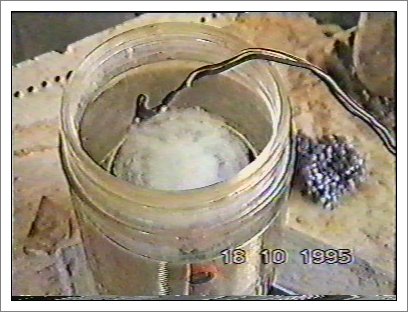
This photo taken just a current is being applied notice the gas bubbles being formed, a few seconds later the entire glass is filled with a white mass of bubbling foam
Aluminium is the easiest to do. Some aluminium engines only take a day of driving to completely cut over. The exhaust is ice cold, the radiator has ice on it and it has twice the power of a petrol engine. I believe it may be worthwhile to remove the water from the block and replace it with Auto Transmission Fluid as it freezes at a much lower temperature.
I would expect that the water pump vanes would need to be clipped or drilled to decrease efficiency and drag in the oil. The bolt on the bottom is connected to the chassis. This may seem too simple but if done correctly it works.
I'm currently working on my VN commodore and my other project is a turbocharged intercooled 13B rotary. I do not know what is going to happen with the turbocharged engine.
If I can make it work there will not be a engine that couldn't be converted including diesel's (replace injectors with spark plugs and electronic timing unit about $440).Imagine ever truck and car in Australia using no fuel creating no pollution.
A wonderful place, however the government and fuel companies will do every thing that they can to stop us the people. I thought that they are our servants.(I wish)
This cell functions as a tree does, it is a biocapacitor or a self charging capacitor like the "ARK of covenant" to stop the charging you must enclose the capacitor in Aluminium.
Added Benefits: Your car will not rust the paint will not oxidize the oil will last many times longer the energy around the car will keep you healthy and heal your ills.
WATER:
The water used must be as clean as possible and alive ( none treated water) once it is energised via a special process the water can be used in the cell.
All the impurities will be removed with this process that uses low voltage electricity.
There has been some other written work on this subject however
Finally it seems the wizard is getting some financial rewards for his efforts and some credit.
This idea alone could be worth Billions world wide. The 'Wizard' has many other wonderful inventions however the world may not be ready for them yet...
Additional info
I have been in contact with someone who has seen this device work and is building or has had some experience with this type of cell and some other information has come my way. (1) it seems that no hydrogen gas is actually supplied to engine and the energy is actually transferred to the engine by means of a blind carby fitting.(This certainly hard to believe but my contract says this is what has been done and the car of Joe does actually runs as reported. (2) It has been reported that special creek water is used but my contact informs me that good clean rainwater may also be usable. (3) Photos released on the device seem to indicate that a great deal of bubbles need to formed but this may not also be necessary as stated by my contact. (4) It has also been reported that the Water cell seems to discharge itself overnight. One solution was to connect a low power battery between the active plates (1.5volt cell ) to keep it from discharging. My contact also suggests just connecting a Light emitting diode between the two plates would also be useful and may also overcome this problem. (5) Also reported that you must be able to keep the spacing material for shorting out to the metal cylinders by foreign matter build up and that by using Mica ( that stuff that used in capacitor manufacture ) between the spacers and the metal cylinders would also prevent the problem from occurring. (6) I must admit that I don't totally understand the process myself, but I have been told that an implosive mixture is actually formed within the engine block and then this actually is enough to cause the motor to work for extended periods of time under load. I am still haven't seen a unit working myself, and I'm trying to find a source for the proper stainless steel and build one myself to check out for myself if it does indeed work, but I'm still optimistic that something is happening here and I'm not going to be the one to miss out when it's found to be a real goer. I think there are moves a foot to get some kits made up for the rest of us to experiment with ,but I am unable to find the source. I will add the details here when I do...Stainless Steel Specifications
As Copied from http://www.sppusa.com/reference/white_paper/wp_ss.html
As Joes devices uses a special grade of stainless steel it may be of interest to intending builders of the device to know the differences and types
Stainless Steel
Stainless steel is primarily when corrosion or oxidation are a problem. The function that they perform cannot be duplicated by other materials for their cost. Over 50 years ago, it was discovered that a minimum of 12% chromium would impart corrosion and oxidation resistance to steel. Hence the definition "Stainless Steels", are those ferrous alloys that contain a minimum of 12% chromium for corrosion resistance. This development was the start of a family of alloys which has enabled the advancement and growth of chemical processing and power generating systems upon which our technological society is based. Subsequently several important sub-categories of stainless steels have been developed. The sub-categories are austenitic, martensitic, ferritic, duplex, precipitation hardening and super alloys.
Austenitic Grades

Austenitic grades are those alloys which are commonly in use for stainless applications. The austenitic grades are not magnetic. The most common austenitic alloys are iron-chromium-nickel steels and are widely known as the 300 series. The austenitic stainless steels, because of their high chromium and nickel content, are the most corrosion resistant of the stainless group providing unusually fine mechanical properties. They cannot be hardened by heat treatment, but can be hardened significantly by cold-working.
Straight Grades
The straight grades of austenitic stainless steel contain a maximum of 8% carbon. There is a
misconception that straight grades contain a minimum of 3% carbon, but the spec does not require this. As long as the material meets the physical requirements of straight grade, there is no minimum carbon requirement.
"L" Grades
The "L" grades are used to provide extra corrosion resistance after welding. The letter "L" after a stainless steel type indicates low carbon (as in 304L). The carbon is kept to .03% or under to avoid carbide precipitation. Carbon in steel when heated to temperatures in what i s called the critical range (800 degrees F to 1600 degrees F) precipitates out, combines with the chromium and gathers on the grain boundaries. This deprives the steel of the chromium in solution and promotes corrosion adjacent to the grain boundaries. By controlling the amount of carbon, this is minimized. For weldability, the "L" grades are used. You may ask why all stainless steels are not produced as "L" grades. There are a couple of reasons:
"L" grades are more expensive
Carbon, at high temperatures imparts great physical strength
Frequently the mills are buying their raw material in "L" grades, but specifying the physical properties of the straight grade to retain straight grade strength. A case of having your cake and heating it too. This results in the material being dual certified 304/304L; 316/316L, etc.
"H" Grades
The "H" grades contain a minimum of 4% carbon and a maximum of 10% carbon and are designated by the letter "H" after the alloy. People ask for "H" grades primarily when the material will be used at extreme temperatures as the higher carbon helps the material retain strength at extreme temperatures.
You may hear the phrase "solution annealing". This means only that the carbides which may have precipitated (or moved) to the grain boundaries are put back into solution (dispersed) into the matrix of the metal by the annealing process. "L" grades are used where annealing after welding is impractical, such as in the field where pipe and fittings are being welded.
Type 304 The most common of austenitic grades, containing approximately 18% chromium and 8% nickel. It is used for chemical processing equipment, for food, dairy, and beverage industries, for heat exchangers, and for the milder chemicals.
Type 316 Contains 16% to 18% chromium and 11% to 14% nickel. It also has molybdenum added to the nickel and chrome of the 304. The molybdenum is used to control pit type attack. Type 316 is used in chemical processing, the pulp and paper industry, for food and beverage processing and dispensing and in the more corrosive environments. The molybdenum must be a minimum of 2%. Type 317 Contains a higher percentage of molybdenum than 316 for highly corrosive environments. It must have a minimum of 3% "moly". It is often used in stacks which contain scrubbers.
Type 317L Restricts maximum carbon content to 0.030% max. and silicon to 0.75% max. for extra corrosion resistance.
Type 317LM Requires molybdenum content of 4.00% min
Type 317LMN Requires molybdenum content of 4.00% min and nitrogen of .15% min Type 321
Type 347 These types have been developed for corrosive resistance for repeated intermittent exposure to temperature above 800 degrees F. Type 321 is made by the addition of titanium and Type 347 is made by the addition of tantalum/columbium. These grades are primarily used in the aircraft industry.
Martensitic Grades

Martensitic grades were developed in order to provide a group of stainless alloys that would be corrosion resistant and hardenable by heat treating. The martensitic grades are straight chromium steels containing no nickel. They are magnetic and can be hardened by heat treating. The martensitic grades are mainly used where hardness, strength, and wear resistance are required. Type 410 Basic martensitic grade, containing the lowest alloy content of the three basic stainless steels (304, 430, and 410). Low cost, general purpose, heat treatable stainless steel. Used widely where corrosion is not severe (air, water, some chemicals, and food acids. Typical applications include highly stressed parts needing the combination of strength and corrosion resistance such as fasteners.
Type 410S Contains lower carbon than Type 410, offers improved weldability but lower hardenability. Type 410S is a general purpose corrosion and heat resisting chromium steel recommended for corrosion resisting applications.
Type 414 Has nickel added (2%) for improved corrosion resistance. Typical applications include springs and cuttlery.
Type 416 Contains added phosphorus and sulphur for improved machinability. Typical applications include screw machine parts.
Type 420 Contains increased carbon to improve mechanical properties. Typical applications include surgical instruments.
Type 431 Contains increased chromium for greater corrosion resistance and good mechanical properties. Typical applications include high strength parts such as valves and pumps. Type 440 Further increases chromium and carbon to improve toughness and corrosion resistance. Typical applications include instruments.
Ferritic Grades
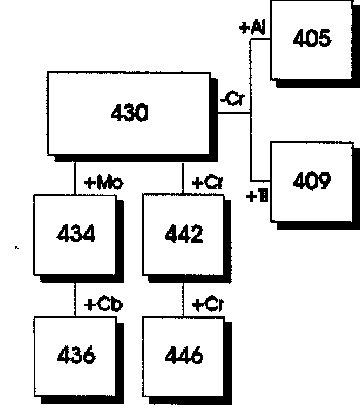
Ferritic grades have been developed to provide a group of stainless steel to resist corrosion and oxidation, while being highly resistant to stress corrosion cracking. These steels are magnetic but cannot be hardened or strengthened by heat treatment. They can be cold worked and softened by annealing. As a group, they are more corrosive resistant than the martensitic grades, but generally inferior to the austenitic grades. Like martensitic grades, these are straight chromium steels with no nickel. They are used for decorative trim, sinks, and automotive applications, particularly exhaust systems. Type 430 The basic ferritic grade, with a little less corrosion resistance than Type 304. This type combines high resistance to such corrosives as nitric acid, sulfur gases, and many organic and food acids. Type 405 Has lower chromium and added aluminum to prevent hardening when cooled from high temperatures. Typical applications include heat exchangers. Type 409 Contains the lowest chromium content of all stainless steels and is also the least expensive. Originally designed for muffler stock and also used for exterior parts in non-critical corrosive environments. Type 434 Has molybdenum added for improved corrosion resistance. Typical applications include automotive trim and fasteners. Type 436 Type 436 has columbium added for corrosion and heat resistance. Typical applications include deep-drawn parts. Type 442 Has increased chromium to improve scaling resistance. Typical applications include furnace and heater parts. Type 446 contains even more chromium added to further improve corrosion and scaling resistance at high temperatures. Especially good for oxidation resistance in sulfuric atmospheres. Duplex Grades Duplex grades are the newest of the stainless steels. This material is a combination of austenitic and ferritic material. This material has higher strength and superior resistance to stress corrosion cracking. An example of this material is type 2205. It is available on order from the mills.
Precipitation Hardening Grades
Precipitation hardening grades, as a class, offer the designer a unique combination of fabricability, strength, ease of heat treatment, and corrosion resistance not found in any other class of material. These grades include l7Cr-4Ni (17-4PH) and l5Cr-SNi (15-5PH). The austenitic precipitationhardenable alloys have, to a large extent, been replaced by the more sophisticated and higher strength superalloys. The martensitic precipitation-hardenable stainless steels are really the work horse of the family. While designed primarily as a material to be used for bar, rods, wire, forgings, etc., martensitic precipitation-hardenable alloys are beginning to find more use in the flat rolled form. While the semiaustenitic precipitation-hardenable stainless steels were primarily designed as a sheet and strip product, they have found many applications in other product forms. Developed primarily as aerospace materials, many of these steels are gaining commercial acceptance as truly cost-effective materials in many applications.
Superalloy Grades
Superalloys are used when 316 or 317 are inadequate to withstand attack.They contain very large amounts of nickel and/or chrome and molybdenum. They are usually much more expensive than the usual 300 series alloys and can be more difficult to find. These alloys include Alloy 20 and Hastelloy.
Here is my take on it (assuming of course that all of the above is true). I am taking it one step further... I believe that one could do away with the cylinders altogether because they've got nothing to do with the process. The process is about inertia, not internal combustion. I think that if one were to build an 'orgone accumulator' design with just the crack at the centre that would be ebough to power the motor. Why do I think this? Because I have very first hand experience of what the pendulum is capable of. I think that what would happen inside the 'crank-case' is that the initial inertia, once provided by the starter motor, would be replaced by a flow of 'orgone' energy (much like the pendulum) and the crank would continue to spin a bit like an electric motor. Applying more orgone would make it accelerate like crazy. Can you imagine what sort of revs it would be capable of. Replacing the crank with a solid stainless steel shaft would make it rev even highr. What if maybe one were to then add an electrical charge to the shaft (which itself would then become the cathode) and the crank case (the anode)... What sort of vooma would one then have... entirely free of charge?I don't know if I fully understand the concept of 'orgone' or the 'Joe Cell' yet. My exploration of it has just begun, but I'm sure of one fact - it's nothing if not engaging. It defies many scientific notions and begs a rithink on the nature of energy. With my background in "Empirical evidence gathering" I for one would encourage the scientific community to investigate this more fully. It's a win-win scenario - even a negative outcome moves our knowledge of science forward surely? One question persists: "I certainly can't be the first to have had this notion. Why has it not happened?"
Incidently, 'Joe' too was silenced. He's still around somewhere in the outback, but under threat to his and his family's lives if he ever tells anybody of his plans... Too late. They're all over the Internet."Joe, the inventor, has not attempted to financially capitalize on his astounding discovery, but rather had decided to freely give away the information on how to construct his incredible Energy Cell for public benefit. In response to this monumental, magnanimous and altruistic gift, Joe has been the victim of threats and harassment to pressure him into stop talking. The intimidation has succeeded and today Joe no longer demonstrates or talks about his Energy Cell."I for one don't blame him. Sadly, he has reason to fear for his safety. Below is an exerpt from an email to a would be debunker which explains this:
"Does the name Stanley A. Meyers of Ohio hold any meaning for you?While Stanely was an extremely bright guy, he made the fatal error of clinging to belief in the utter rubbish and foolsihness that you espouse. It cost him his life. And it cost the world an opportunity to retrofit their car for about $600 and run it with only water-any type of water, from distilled to sea water. Not only cars, but ships, planes, rocket engines, in fact anything that runs with a motor. Oh yea, his process allowed an unlimited extraction of free electricity from the water. How about Edwin Gray? Ever heard of him? He tried to do it 'your way' too. He was murdered in Riverside county in the early 1990's after presenting an auto angine that ran solely on Radiant energy back in 1973. If he wasn't blocked, those engines would have been on the road by 1975..."http://educate-yourself.org/lte/joecelldebunker18mar04.shtmlhttp://befreetech.com/free_energy_coverup.htmThere are powerful interest groups out there who don't want to see someone give the world FREE energy... or anything else for that matter. It is unfortunately a fact that we as a society are, to varying degrees, herded like sheep into what we believe to be true. Iraq HAD weapons of mass destruction remember? If you have read this blog you have been made aware that there are alternatives to fossil fuels, and many other regulated energy sources. Now it's up to you to make yourself heard. Be ignorant no longer.
